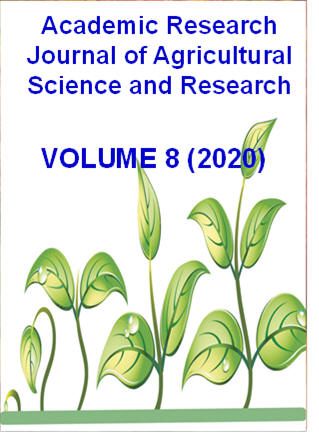|
ISSN: 2360-7874 |
Academic Research Journal of
Agricultural Science and Research |
|||||||||||||||||||
|
Vol. 8(6), pp. 630-648, August 2020 Research Morphological Variations of Arsi, Kereyu and their Crossbred Cattle under Current Climate Change in Mid Rift Valley of Oromia, Ethiopia
Yadeta Nigatu Merga1 and Yosef Tadesse2
1Oromia Agricultural Research Institute, Adami Tulu Agricultural Research Center P. O. Box 35 Zuway, Ethiopia. Corresponding author’s E-mail: Email: yade.nige@gmail.com 2Haramaya University, College of Agriculture and Environmental Science Accepted 30 August 2020
The Present study was conducted in Fentale and Boset districts, East Shoa Zone, Oromia Region, Ethiopia. The aim of this study was to examine morphometric variation between indigenous cattle breeds of Arsi, Kereyu and their crosses, in the mid rift valley of Oromia Region. Three PA’s from each district, a total of Six PA (Huluka, Kawa, Barchota, Benti, Kobo and Daka edu) were selected purposively. Respondent farmers were identified using purposive sampling technique. Kereyu, Arsi and crossbred cattle of the two were reared for milk production, risk aversion and source of income. The major production constraints identified were feed shortage, water scarcity, disease and coverage of grazing land by invasive plants. On the Morphometrical traits of the breeds, Kereyu breed had better morphometric measurement trait (BL:127.44+0.64,HG:149.67+0.57cm) than the rest (BL:124.94+0.59,117.56+0.67 and HG:145.97+0.66,142.68+0.67 cm) for cross and Arsi cattle respectively in the Boset. Most morphometric traits were significantly different between the districts of the same breed and age groups. The most discriminating power (differentiation) of the morphometric traits to identify the breeds were heart girth, height at withers, horn length and neck length. The farmers in the two districts prefer Kereyu breed due to their ability to tolerate drought, diseases and highly adaptable to the area, where as Arsi breed of cattle was susceptible to feed shortage, water scarcity and diseases than other breeds in the area.. This study revealed that the Arsi respondents in the study area prefers to mate breeding female of Arsi with bull of Kereyu breed due to better performing and adaptability of breed
Keywords: Arsi cattle, Crossbred, Kereyu cattle, Morphometry
How to cite this article (APA Style): Yadeta Nigatu M.,, Yosef T (2020). Morphological Variations of Arsi, Kereyu and their Crossbred Cattle under Current Climate Change in Mid Rift Valley of Oromia, Ethiopia. Acad. Res. J. Agri. Sci. Res. 8(6): 630-648
|
|||||||||||||||||||
